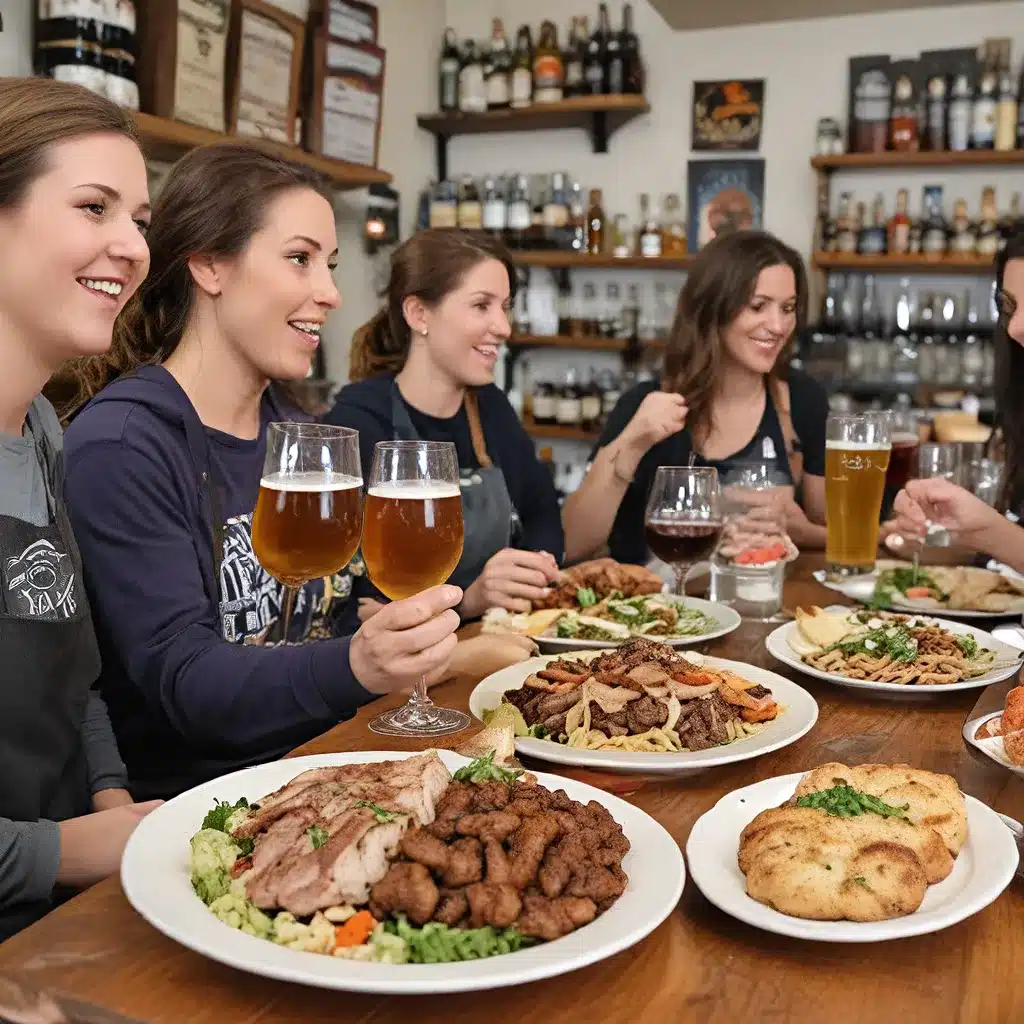
Busting the Myth of Pretentious Beer Pairings
Boy, did I have a lot to learn when it came to the world of beer and food pairings. I’ll never forget the first time I tried to tackle this so-called “fancy” concept. I imagined tuxedo-clad waiters silently judging my every move as I agonized over the perfect match for my meal. The pressure of getting it “just right” had me breaking out in a cold sweat.
How could anyone possibly know all the flavor profiles of every beer and dish to make the ideal pairing? It seemed like an impossible task, one reserved for the most seasoned (no pun intended) foodies and cicerones. But as I dove deeper into the world of craft beer, I realized that the art of pairing was far less daunting than I had imagined.
Uncovering the Secrets of Successful Pairings
The key, I discovered, lies in understanding a few fundamental principles about both beer and food. Once you get the hang of it, the possibilities for creative and delightful combinations are truly endless. So let’s dive in, shall we?
Balancing Act: Intensity and Contrast
The first rule of thumb is to be aware of intensity – both in your beer and your food. A beer with bold, assertive flavors will easily overpower a delicate dish, while a watery, bland beer will get lost in the shuffle of a richly flavored meal. It’s all about finding the right balance.
That’s where the concept of contrast comes into play. Sometimes, you’ll want to use a highly carbonated or bitter beer to “scrub” the palate after a particularly fatty or creamy dish. The carbonation and bitterness act as a palate cleanser, allowing you to appreciate each flavor to the fullest.
Resonating Flavors
On the flip side, there’s the idea of “resonance” – when the flavors in the beer and the food complement each other seamlessly. Think about the way the caramelized, chocolatey notes in a robust porter pair so beautifully with the char and sweetness of barbecue ribs. It’s a match made in culinary heaven!
The key is to look for common flavor profiles – whether it’s toasted malt, citrusy hops, or creamy mouthfeel. When the beer and the dish share these qualities, the result is a harmonious symphony of taste.
Diving into the Details
Of course, understanding the fundamentals of pairing is just the beginning. To really take your game to the next level, you’ll need to dive deeper into the specific characteristics of both your beer and your food.
Let’s start with the beer. The alcohol content, malt character, sweetness, and hop profile all play a crucial role in how the brew will interact with your meal. Higher-alcohol beers, for instance, pair best with more robust, flavorful foods, while lighter, more delicate brews shine alongside fresh, simple dishes.
On the food side, you’ll want to consider the basic tastes – sweet, salty, sour, bitter, and umami. How these flavors balance (or clash) with the beer can make or break the pairing. For example, a salty dish may seem less so when paired with a tart, sour beer, while bitterness in a beer can help to accentuate spicy elements in a meal.
Exploring Local Flavors
Now that we’ve covered the fundamentals, let’s put them into practice with some real-world examples. And what better place to start than right here in our own backyard – the vibrant local food and beverage scene of The Up & Under Pub?
Salad and Witbier: A Refreshing Match
One of my personal favorite pairings is a simple yet sophisticated salad of romaine, baby arugula, toasted walnuts, and fresh orange slices, matched with a Belgian-style witbier like Blanche de Bruxelles. The citrus character of the beer complements the orange slices beautifully, while the spicy coriander notes make the peppery arugula really shine. And the beer’s low alcohol content and refreshing carbonation help to balance out the salad’s slightly bitter edges.
Ribs and Robust Porter: A Match Made in Barbecue Heaven
Now, let’s talk about something a little more hearty – mouthwatering St. Louis-style barbecue ribs with a tangy, tomato-based sauce. The perfect pairing? A robust porter like Founders Porter. The dark, roasty malts in the beer resonate with the charred, caramelized flavors of the ribs, while the beer’s assertive bitterness cuts through the dish’s natural fattiness. And the sweetness of the barbecue sauce finds a delightful counterpoint in the porter’s chocolatey undertones.
Ice Cream and ESB: An Unexpected Delight
Finally, let’s end on a sweet note with a scoop of rocky road ice cream and a traditional English ESB like Morland’s Old Speckled Hen. Though not a conventional pairing, the beer’s caramelized malt character perfectly complements the milk chocolate and marshmallow flavors of the ice cream. And the butteriness and fruity notes imparted by the beer’s yeast strain add an unexpected complexity that elevates the entire dessert experience.
The Joy of Discovery
These are just a few examples of the endless possibilities when it comes to pairing local cuisine with craft brews. The real fun, though, lies in the journey of discovery – experimenting with new flavors, finding unexpected combinations, and ultimately, creating a dining experience that delights the senses.
So the next time you find yourself staring at a menu, paralyzed by the thought of choosing the “perfect” beer, take a deep breath and remember: there are no hard and fast rules. The only thing that matters is finding a pairing that brings you joy. Whether it’s a classic match or a delightfully unconventional one, the true delight is in the adventure.
After all, the best culinary journeys are the ones that surprise and delight us along the way. So let’s raise a glass to that, shall we?

